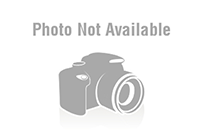Light Therapy May Cure Acne
Acne Treatment - Acne may be cured by a simple light treatment, first developed to iron out wrinkles, as demonstrated a study carried out at a London hospital. The Hammersmith Hospital in West London tested Low Level Laser Therapy normally used in private beauty salons on 30 patients who were suffering mild to moderate acne.
In a period of 12 weeks their acne had halved. Meanwhile, those on a dummy treatment showed no improvement. Findings show that those with the most severe symptoms displayed the most astonishing improvement, mostly within the first month of treatment. Under experts conclusions, this is significantly faster than most conventional antibiotic treatments, which can take as long as eight months to work.
Tony Chu, the dermatologist who led the trial, explained that “we were brought in to see if the anecdotal evidence worked in a clinical trial and we found out it was very successful. However, we still do not know exactly how it works and that is an area we are now working on.”
The expert said that the treatment appears to be showing the same kind of efficacy as antibiotics, but without the potential side effects. “What we need to do now is to see if it works as well on acne around other parts of the body, and work out the treatment which is most clinically effective”,
In a period of 12 weeks their acne had halved. Meanwhile, those on a dummy treatment showed no improvement. Findings show that those with the most severe symptoms displayed the most astonishing improvement, mostly within the first month of treatment. Under experts conclusions, this is significantly faster than most conventional antibiotic treatments, which can take as long as eight months to work.
Light Therapy for Acne Treatment
The study showed that a single five-minute session could have a dramatic effect on acne for up to 12 months. Physicians used a treatment called pulse dye laser therapy in which the affected area is exposed to short bursts of light. The process had been used to combat wrinkles as it is known to stimulate the production of collagen.Tony Chu, the dermatologist who led the trial, explained that “we were brought in to see if the anecdotal evidence worked in a clinical trial and we found out it was very successful. However, we still do not know exactly how it works and that is an area we are now working on.”
The expert said that the treatment appears to be showing the same kind of efficacy as antibiotics, but without the potential side effects. “What we need to do now is to see if it works as well on acne around other parts of the body, and work out the treatment which is most clinically effective”,




